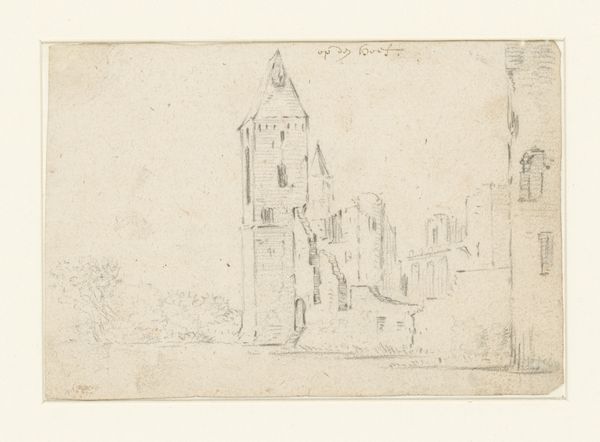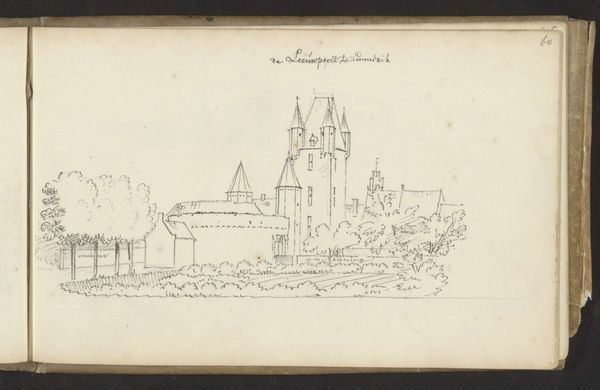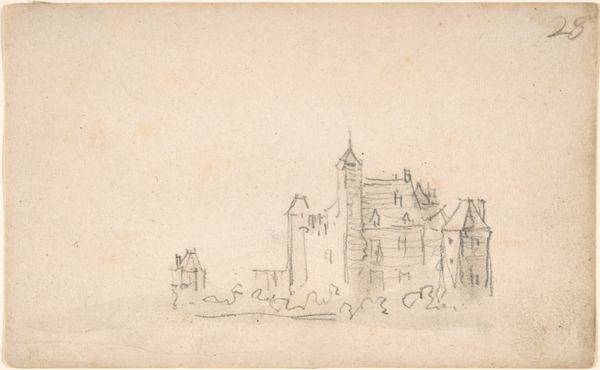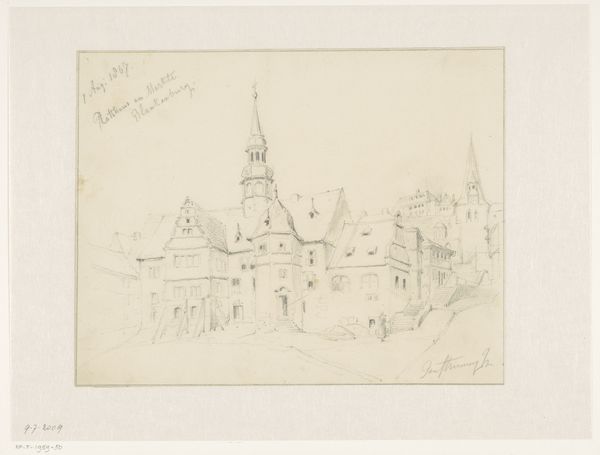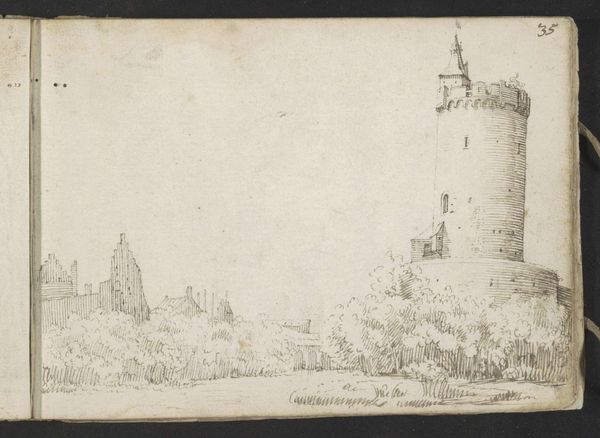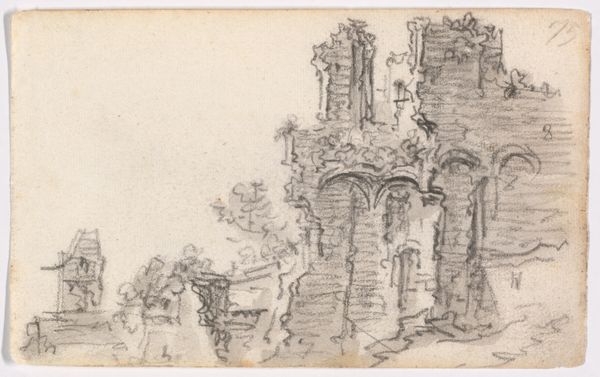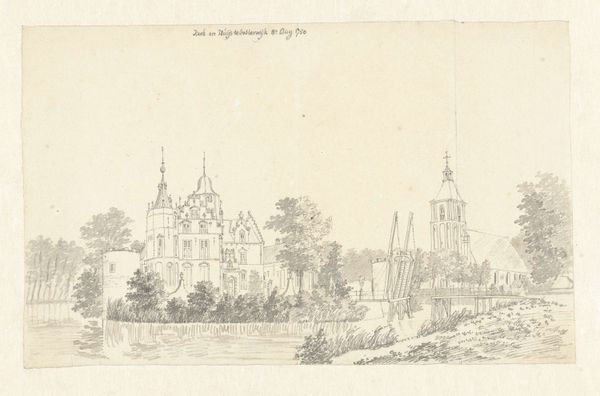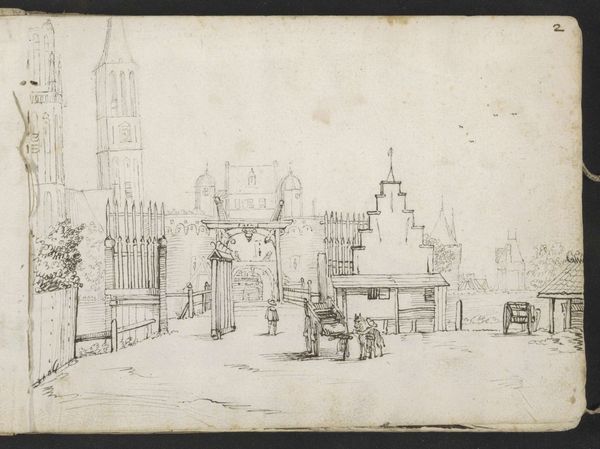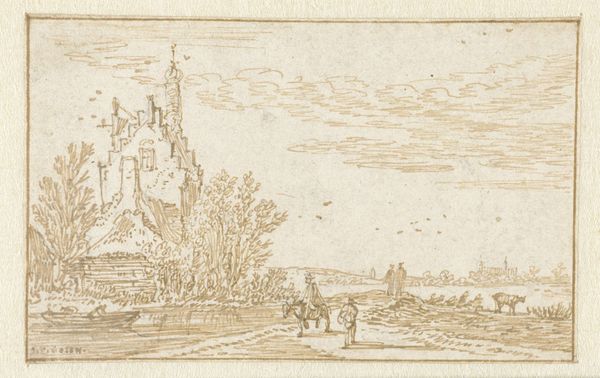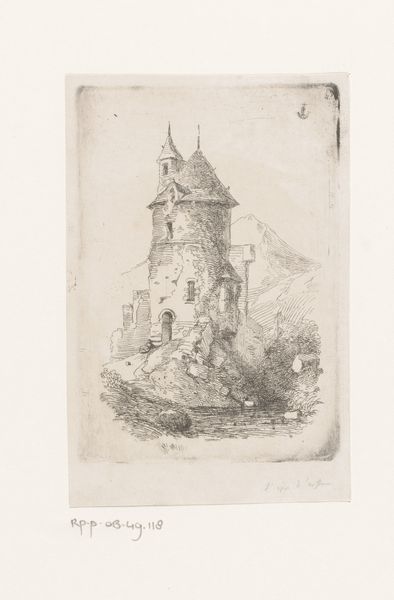
drawing, paper, pencil, architecture
#
drawing
#
medieval
#
dutch-golden-age
#
landscape
#
paper
#
pencil
#
architecture
Dimensions: height 100 mm, width 147 mm
Copyright: Rijks Museum: Open Domain
Editor: So, this drawing is titled "Ruïne van de abdij van Egmond," or "Ruins of the Abbey of Egmond." It was created by Salomon van Ruysdael sometime between 1630 and 1670 using pencil on paper. There's such a wistful mood to it; the ruins really speak to the passage of time. What strikes you when you look at this piece? Curator: You know, it whispers stories of resilience, doesn't it? I can almost smell the damp stone and hear the echoes of Gregorian chants carried on the wind. What moves me is the way Ruysdael captured not just the physical decay but the soul of the place. I wonder, do you feel a certain peacefulness despite the ruin? It’s like witnessing a grand old tree slowly returning to the earth. Editor: I think so. The emptiness allows the viewer space to wander. In contrast to paintings by Ruysdael of bustling marketplaces, where everything seems calculated, how does it reflect a departure from his norm? Curator: Precisely! It’s intimate and almost confessional. You get the feeling Ruysdael wasn't just documenting, he was contemplating. Consider what the Dutch Golden Age actually *was*—an explosive period of commerce, right? But this... This is the quiet shadow cast by that ambition, a memento mori in stone and pencil. Doesn’t it give you pause? Editor: It does. Knowing about the Dutch Golden Age, I would’ve expected landscapes full of signs of new construction, wealth, and innovation. So in this artwork I realize there's more complexity. It feels like I can reflect on that complexity today, with a simple drawing. Curator: And isn’t that wonderful? Ruysdael gives us permission to find beauty in what's left behind. That’s why I keep returning to it, searching its fragile lines for meaning. A subtle reminder that nothing gold can stay, perhaps, but beauty always endures.
Comments
No comments
Be the first to comment and join the conversation on the ultimate creative platform.
